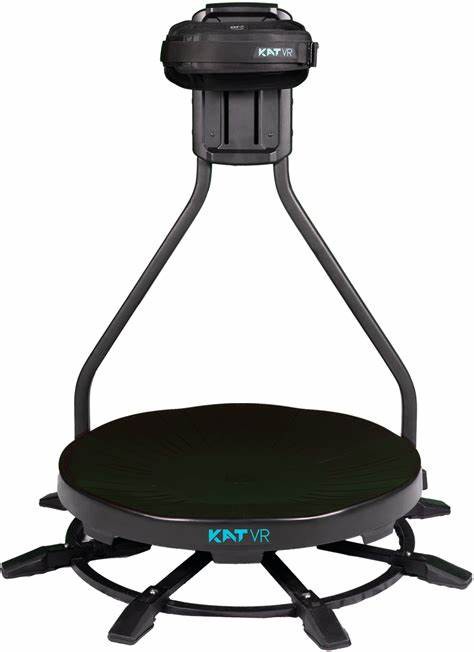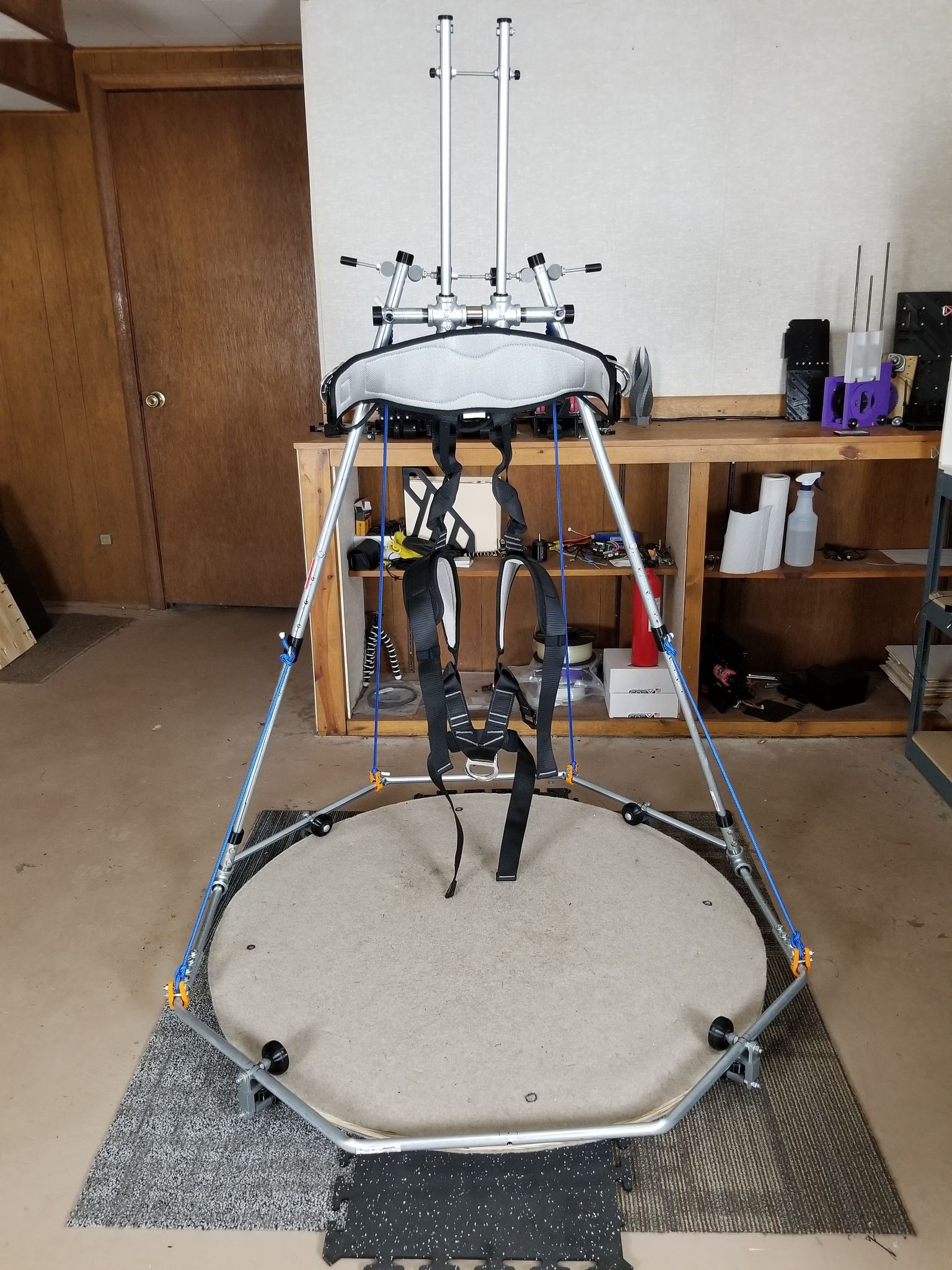The most similar looking device to my DIY rig is the Kat Walk C.


Both the devices have slanted tubes/bars of metal that extend up to a section that has a harness. In my case a climbing harness with leg straps, whereas the Kat Walk C uses a large waist strap. They also both have platforms that are circular. However, there are many non-trivial differences between my DIY device and the Kat Walk C, and other similar devices such as the Virtuix Omni.
Extra Features
My rig supports sitting because the climbing harness has leg straps. If the kat walk C had a strap that had leg straps, and the crouching distance was expanded, it could too, but it currently doesn't.
My rig has a larger range for crouching than the Kat Walk C. It supports tilting forward as well. Lastly, the height of the rig is adjustable.
Reduced Weight
My rig all together weighs 51 pounds (27.4 pounds from the platform, 23.6 pounds from the rig). The Kat Walk C weighs 128 pounds.
Noise Reduction
From the picture above, you can see that underneath the Kat Walk C's platform are a series of legs that extend out from the center. I build a similar design, which I went over in this build log, but one of the reasons I decided against it was because it was louder than just having the platform rest on the ground.
I decided to go with a design that maximizes the surface area in contact with the ground, as this reduced the noise more. The platform consists of 1.5in of polystyrene, a layer of thin carpet, a 0.75in thick piece of plywood, and another layer of thin carpet. The carpet, polystyrene, and large surface area with the ground reduces noise more. You can watch some of my demos here where I also recorded the sound the rig makes. The noise made while walking is relatively quiet. Unfortunately running is still loud.
Platform Differences
The Kat Walk C and other slidemills use a curved, bowl shaped surface. My platform is completely flat to make it easier to build. It's covered with a thin layer of carpet to reduce noise and also to increase friction with the VR shoes a little bit. Obviously, instead of sliding on the surface, I use overshoes with wheels.
Easier Construction
I designed the rig so it would be relatively easy to put together.
- It doesn't require any welding.
- Most of the metal is conduit which is easy to cut and drill holes in. It's also light-weight.
- It uses an octagon with rollers that grip the edge of the platform. This made the platform design easier, as I didn't need a large strong bearing underneath the platform in the center, and didn't need legs holding up the platform. It's also an octagon instead of a perfect circle because an octagon is much easier to make than a perfect ring.
 finallyfunctional
finallyfunctional
Discussions
Become a Hackaday.io Member
Create an account to leave a comment. Already have an account? Log In.